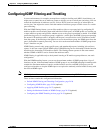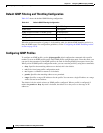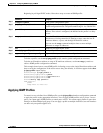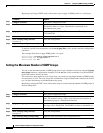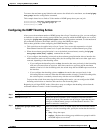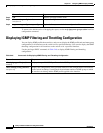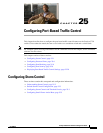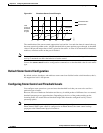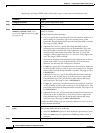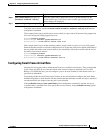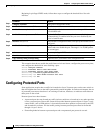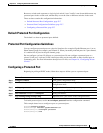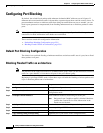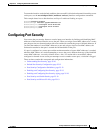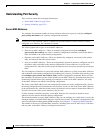
25-3
Catalyst 3750 Switch Software Configuration Guide
OL-8550-09
Chapter 25 Configuring Port-Based Traffic Control
Configuring Storm Control
Figure 25-1 Broadcast Storm Control Example
The combination of the storm-control suppression level and the 1-second time interval controls the way
the storm control algorithm works. A higher threshold allows more packets to pass through. A threshold
value of 100 percent means that no limit is placed on the traffic. A value of 0.0 means that all broadcast,
multicast, or unicast traffic on that port is blocked.
Note Because packets do not arrive at uniform intervals, the 1-second time interval during which traffic
activity is measured can affect the behavior of storm control.
You use the storm-control interface configuration commands to set the threshold value for each traffic
type.
Default Storm Control Configuration
By default, unicast, broadcast, and multicast storm control are disabled on the switch interfaces; that is,
the suppression level is 100 percent.
Configuring Storm Control and Threshold Levels
You configure storm control on a port and enter the threshold level that you want to be used for a
particular type of traffic.
However, because of hardware limitations and the way in which packets of different sizes are counted,
threshold percentages are approximations. Depending on the sizes of the packets making up the
incoming traffic, the actual enforced threshold might differ from the configured level by several
percentage points.
Note Storm control is supported on physical interfaces. You can also configure storm control on an
EtherChannel. When storm control is configured on an EtherChannel, the storm control settings
propagate to the EtherChannel physical interfaces.
Total
number of
broadcast
packets
or bytes
Forwarded traffic
0T1
Threshold
T2 T4 T5
46651
T3 Time
Blocked traffic



